Abstract
The overall goal of the research project was to develop, administer and assess a brief male-focused condom promotion program for inner-city young adult African-American males. To achieve that goal, we conducted a formative study consisting of both quantitative and qualitative research methods. For the qualitative component, which was guided by the relevant tenets of the social cognitive theory and the stages of change model, a series of focus group discussions was conducted among the target population based upon a thematic topic guide that covered three broad areas: young men's perceptions of condom use relative to pregnancy and HIV/sexually transmitted disease (STD) prevention, gender-based issues surrounding condom use, and potential guidelines for the development of customized condom promotion programs. Those focus group discussions were audiotaped and the transcribed data summarized and analyzed based on those thematic topics. The findings revealed that respondents were more likely to assume that they know the risk behaviors of their sexual partners, more likely to consider pregnancy as a socially desirable outcome, more likely to control condom use within relationship dynamics and sexual contexts, and also more likely to provide suggestions on suitable components for program development. The implications and limitations of those findings from this qualitative component of the project are herein described, including potential recommendations for program development.
Full text
PDF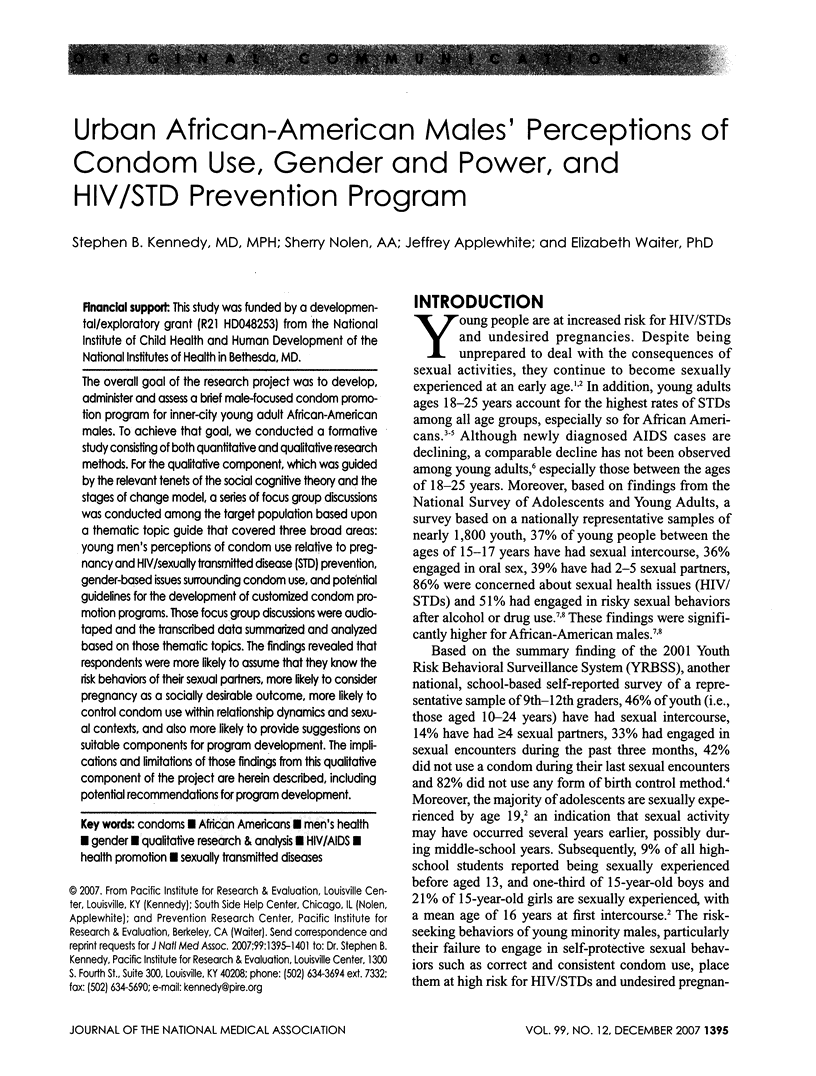
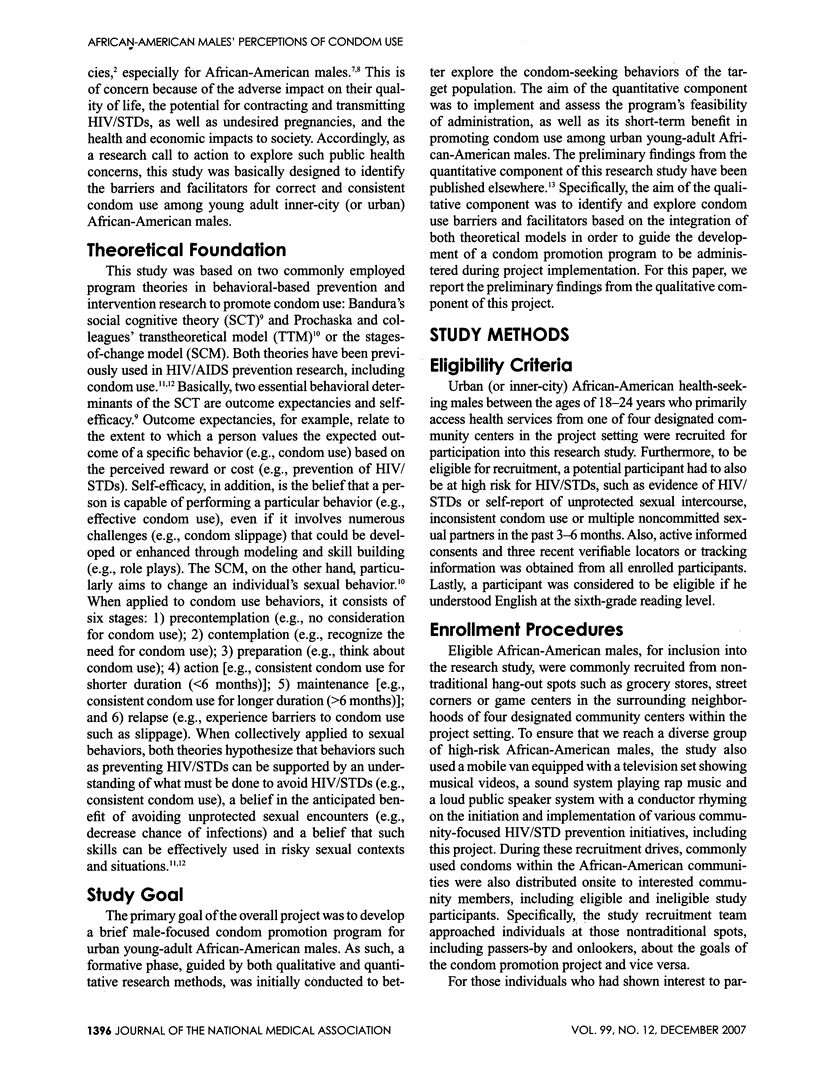
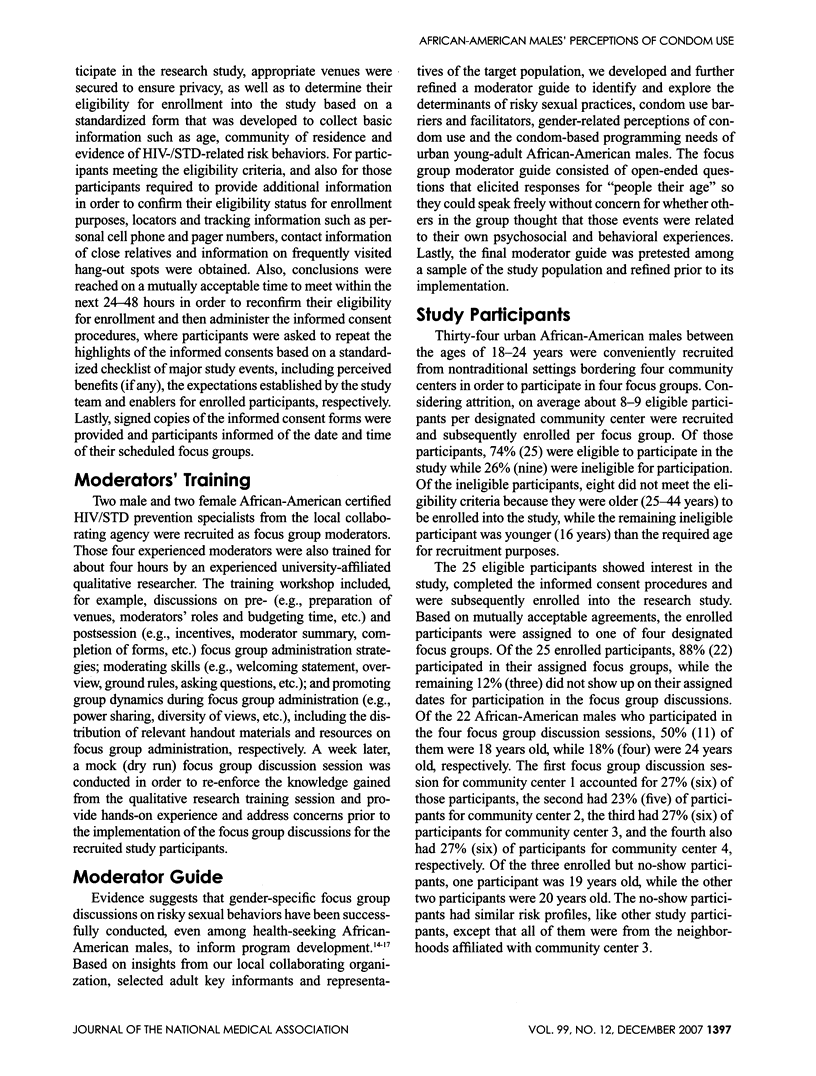
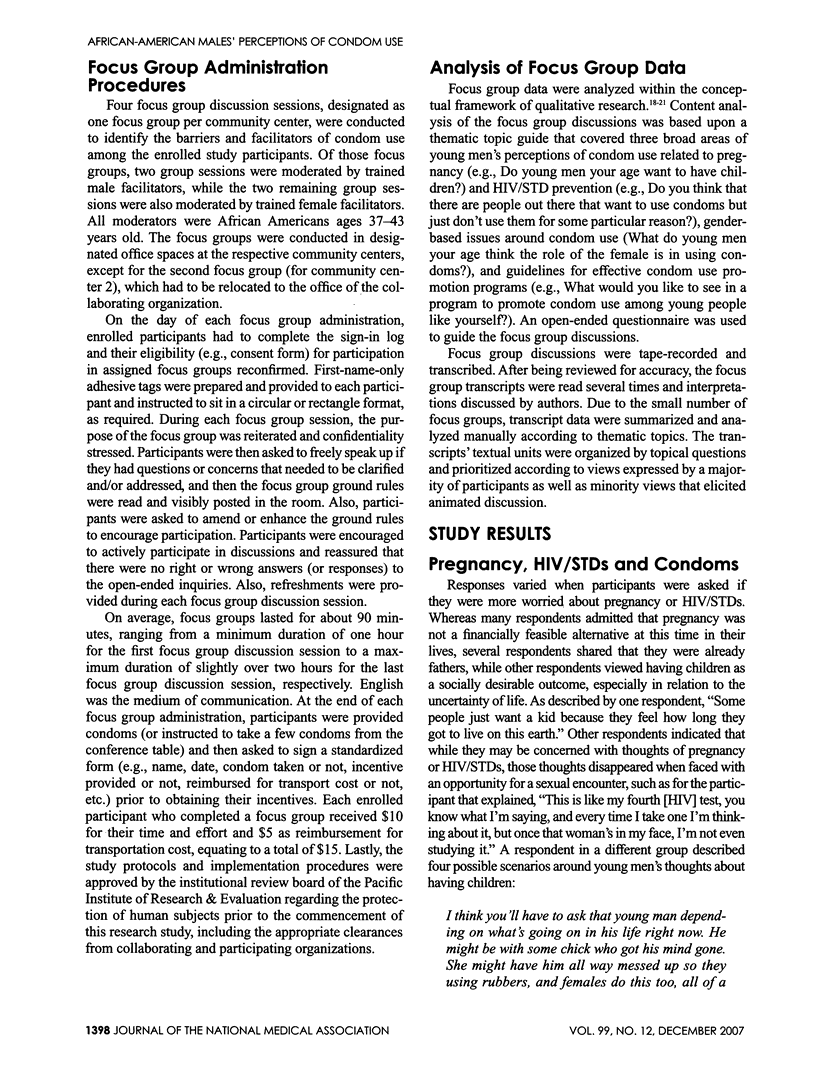
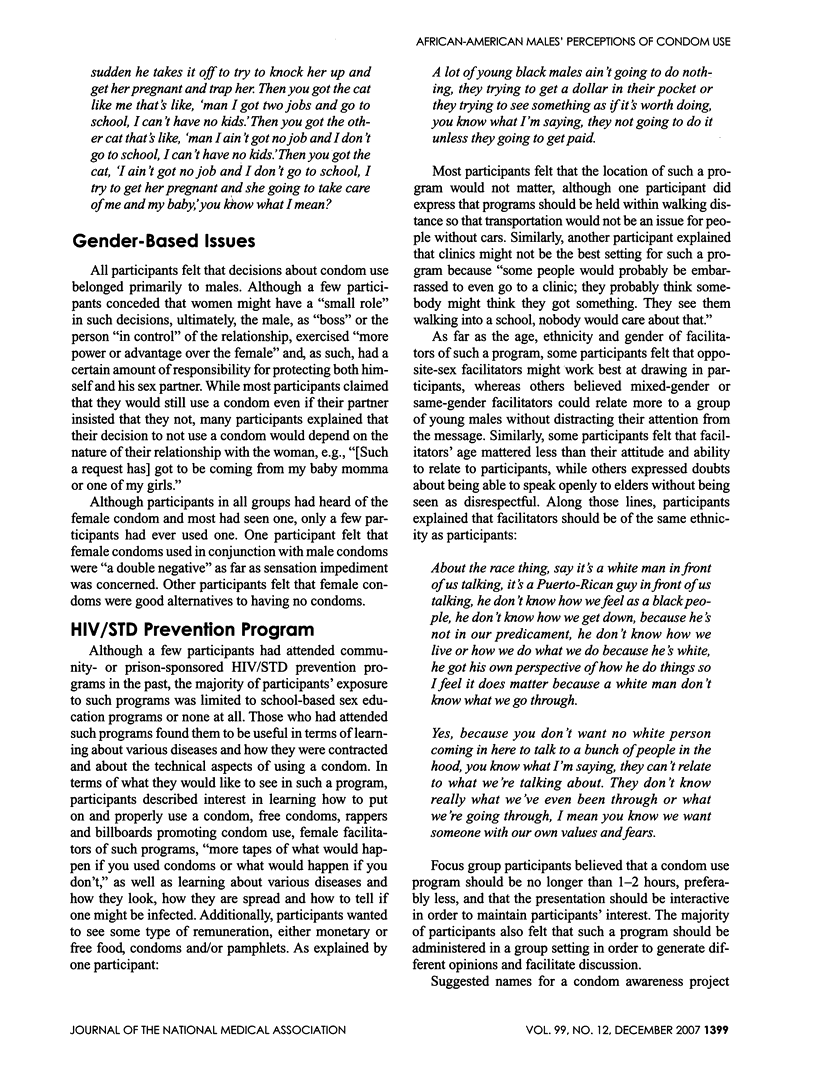
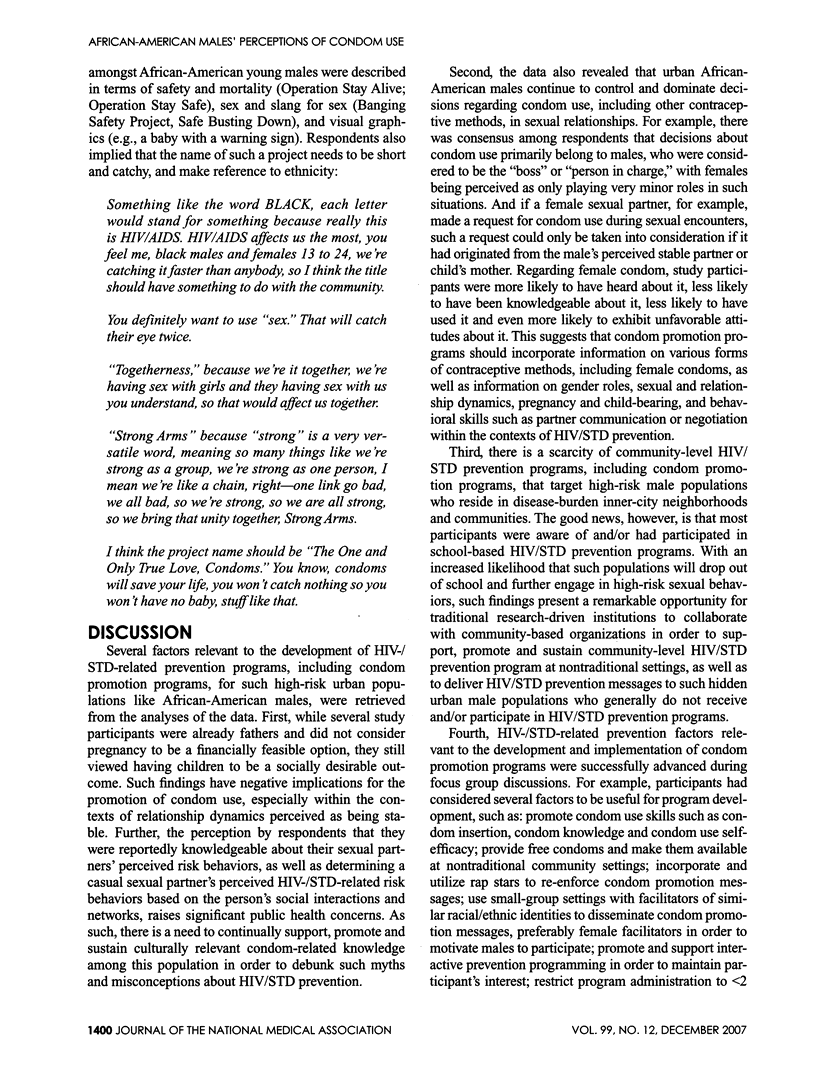
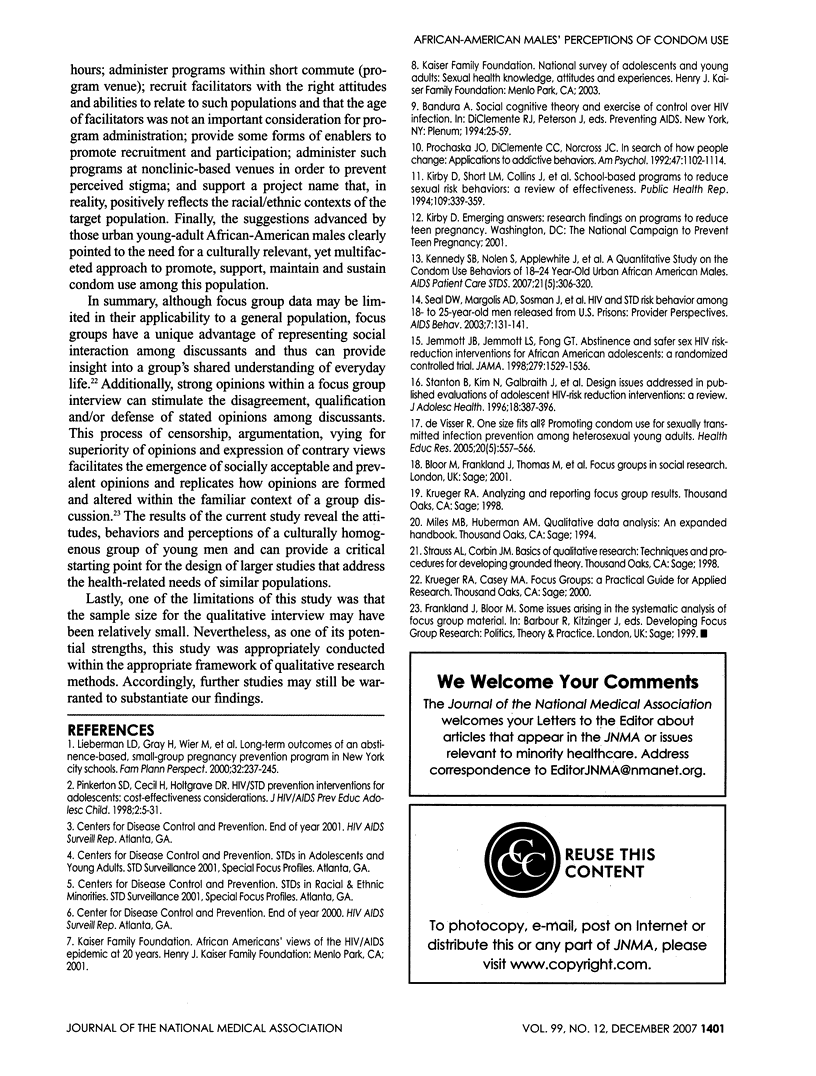
Selected References
These references are in PubMed. This may not be the complete list of references from this article.
- Jemmott J. B., 3rd, Jemmott L. S., Fong G. T. Abstinence and safer sex HIV risk-reduction interventions for African American adolescents: a randomized controlled trial. JAMA. 1998 May 20;279(19):1529–1536. doi: 10.1001/jama.279.19.1529. [DOI] [PubMed] [Google Scholar]
- Kennedy Stephen B., Nolen Sherry, Applewhite Jeffrey, Pan Zhenfeng, Shamblen Stephen, Vanderhoff Kenneth J. A quantitative study on the condom-use behaviors of eighteen- to twenty-four-year-old urban African American males. AIDS Patient Care STDS. 2007 May;21(5):306–320. doi: 10.1089/apc.2006.0105. [DOI] [PMC free article] [PubMed] [Google Scholar]
- Kirby D., Short L., Collins J., Rugg D., Kolbe L., Howard M., Miller B., Sonenstein F., Zabin L. S. School-based programs to reduce sexual risk behaviors: a review of effectiveness. Public Health Rep. 1994 May-Jun;109(3):339–360. [PMC free article] [PubMed] [Google Scholar]
- Lieberman L. D., Gray H., Wier M., Fiorentino R., Maloney P. Long-term outcomes of an abstinence-based, small-group pregnancy prevention program in New York City schools. Fam Plann Perspect. 2000 Sep-Oct;32(5):237–245. [PubMed] [Google Scholar]
- Seal David Wyatt, Margolis Andrew D., Sosman Jim, Kacanek Deborah, Binson Diane, Project START Study Group HIV and STD risk behavior among 18- to 25-year-old men released from U.S. prisons: provider perspectives. AIDS Behav. 2003 Jun;7(2):131–141. doi: 10.1023/a:1023942223913. [DOI] [PubMed] [Google Scholar]
- Stanton B., Kim N., Galbraith J., Parrott M. Design issues addressed in published evaluations of adolescent HIV-risk reduction interventions: a review. J Adolesc Health. 1996 Jun;18(6):387–396. doi: 10.1016/1054-139X(95)00169-S. [DOI] [PubMed] [Google Scholar]
- de Visser Richard. One size fits all? Promoting condom use for sexually transmitted infection prevention among heterosexual young adults. Health Educ Res. 2005 Feb 11;20(5):557–566. doi: 10.1093/her/cyh015. [DOI] [PubMed] [Google Scholar]


